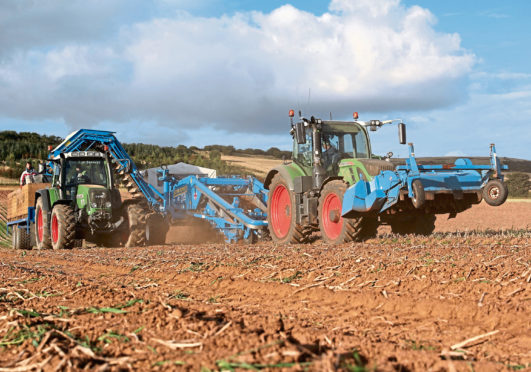Farm levy body AHDB has revealed plans to gauge the carbon footprint of 40 farms across the UK as part of efforts to better understand emissions from different farm types.
AHDB said the farms, which are involved in its strategic and monitor farms programmes, have been selected to represent a range of regions, systems and sectors.
The first cohort of farms involved in the project is made up of 13 cereals and oilseed growers, 10 beef and lamb producers, 10 dairy farmers, four pork farmers and three potato growers.
They include three units in Scotland – a potato enterprise at Milton of Mathers, near Montrose; a mixed arable and livestock enterprise at Balbirnie Home Farms in Fife; and a dairy enterprise at Millands Farm in Ayrshire.
AHDB said assessments of the farms and their carbon footprints will be carried out by SAC Consulting and ADAS between now and March, and the results will be used to develop bespoke mitigation measures in carbon action plans.
“The assessments are essentially the gathering of information – to identify and quantify all activities or inputs on farm that come with a carbon footprint,” said AHDB head of environment Jonathan Foot.
“This can be anything from diesel, electricity, feed, and fertiliser and so on.”
He added: “Once this is established, we can then calculate the carbon-to-output ratio, ie how much carbon is being emitted per unit of output.
“This will then be assessed or benchmarked to determine where savings lie, and a bespoke plan created.”
Dr Foot said mitigation activities for an arable farm could be as simple as changing cultivation routes to save on fuel, or adapting manure application times to optimise nutrient absorption.
“For livestock, growth rates are one of the biggest carbon savings,” he added.
AHDB director of knowledge exchange Tim Isaac said farmers were often reluctant to implement changes on their farms due to concerns about their implications on cost and productivity.
“However, evidence generally points towards ‘better for the environment equals better for businesses’, so there are potentially benefits to be had all around,” he said.
“The key part of these assessments will be the identification of the specific measures the individual farms can take.
“While some will be unique to each one, we also expect some common themes to emerge.
“This will allow us to develop case studies and share practical tips and learnings widely through our knowledge exchange activity.”
Mr Issac said the project would help the industry meet targets to become carbon-neutral by 2050.
“Farmers and growers have a unique opportunity to be part of the solution to tackle climate change,” he said.
